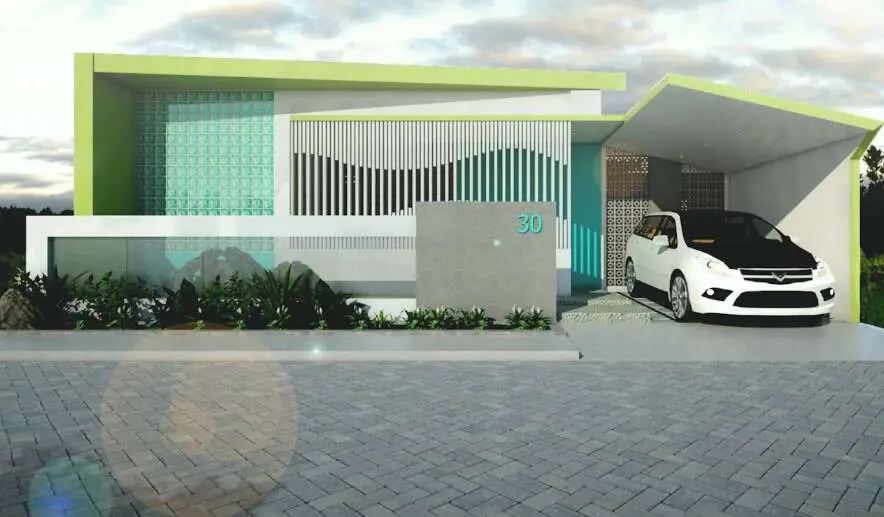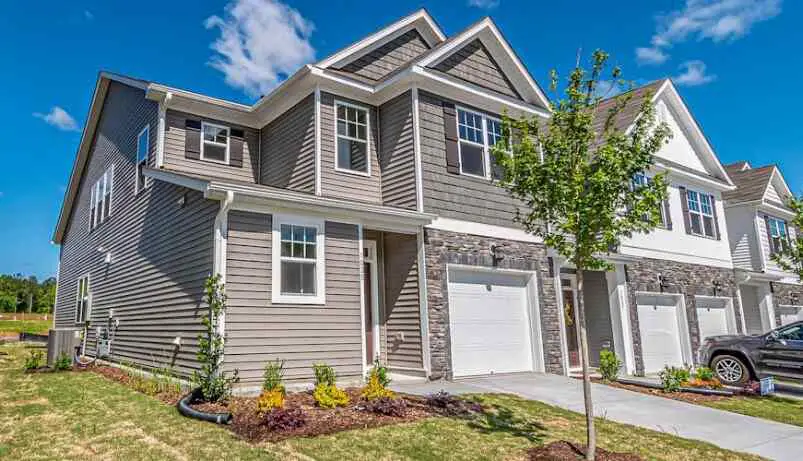The world of buying and selling houses is changing in a big way, thanks to something called 3D. Think of 3D renders as super realistic pictures of homes that aren’t built yet. They’re like a magic wand that lets you see into the future of what a house could look like when it’s all done. Buyers love them because they can picture themselves in the home, even if it’s not built yet.
Sellers and real estate agents are finding these 3D pictures a must-have because they help sell houses faster. Imagine trying to sell a dream house that’s not built yet. With 3D renders, you can show every room in amazing detail, making it easier for someone to fall in love with the place and say, “Yes, I want to live here.” This isn’t just a fancy trick; it’s a game-changer in selling homes. People can now see exactly what they’re buying, making the whole process of choosing a home a lot more fun and less of a guesswork.
So, 3D renders are turning the real estate world upside down, in a good way, helping homes find their new owners much quicker.
Unveiling the Importance of Visual Representation in Real Estate
In the world of selling houses, making a good first impression counts. Imagine you’re looking to buy a house and the thing you see is a picture that makes it look welcoming and beautiful. This is where the magic of 3D renders comes into play. Unlike ordinary photos, 3D renders show the house in a way that feels almost real, like you could step right into the picture.
They give a detailed look at what a house could be, with everything from the light in the rooms to the colors on the walls designed to make you feel like it’s your dream home. This isn’t just about making things look nice, though. When potential buyers see a house presented this well, it catches their interest and makes them more likely to want to buy it.
So, in the big game of selling houses, having an amazing first picture with 3D renders can truly set the stage for a quick and successful sale.
The Shift from Traditional to Digital: How 3D Renders are Changing the Game
The way we look at and choose houses has changed a lot, thanks to technology. In the past, when people wanted to buy a house, they would look at simple pictures or visit a model house to get an idea of what their future home might look like. But now, things are way more advanced and exciting! We’ve moved on to using digital 3D renders.
Imagine being able to see and walk around your future home on a computer or a phone, even before it’s built. This cool technology shows every little detail of a house, from how the light falls in the living room to the way the tiles look in the bathroom. It’s like playing a video game, but the prize is finding your dream home.
This change is really because buyers today want more. They don’t just want to see pictures; they want to feel as if they are already there, in their future home. And honestly, this makes deciding to buy a house easier and a lot more fun. It’s clear that as our world gets more digital, the way we buy homes has to keep up, making the adventure of finding a new home more exciting than ever.
Setting the Stage: What to Expect in This Exploration
In this exploration, we delve into the journey of home selling techniques, highlighting the stark differences between past methods and the innovative use of 3D renders today. Our journey will unravel why 3D rendering services are not just a trend but a game-changer in real estate.
The Evolution of Home Selling Techniques
A Quick Glance at the Past: Traditional Methods of Selling Homes
Traditionally, selling homes was a straightforward process involving physical home tours, printed brochures, and word-of-mouth marketing. Though effective in their time, these methods lack the immediacy and immersion that today’s buyers seek.
The Digital Revolution: Introduction of 3D Renders in Real Estate
The advent of 3D rendering technology has revolutionized home selling. By creating detailed, lifelike representations of properties, real estate agents can now showcase homes in their best light, accessible to potential buyers worldwide.
Comparing Impact: Before and After 3D Implementation
The difference is clear: properties that leverage 3D renders attract more interest, engage buyers more deeply, and sell faster than those using traditional methods. This shift is not just about keeping up with technology but transforming the selling experience altogether.
Why 3D Renders are a Game Changer
Enhancing Visual Appeal: The Power of First Impressions
3D renders create first impressions that are not just good but spectacular. They present properties in vivid detail, highlighting features that photographs or descriptions might miss.
Overcoming Logistical Hurdles: Virtual Tours Anytime, Anywhere
With 3D renders, geographical and time constraints no longer impede a property viewing. Potential buyers can explore properties at their convenience, leading to a wider, more interested audience.
Emotional Connection: Helping Buyers Visualize Their Future Home
There’s something special about visualizing future life in a new home. 3D renders allow potential buyers to see themselves in the space, fostering an emotional connection that can be the deciding factor in the purchasing decision.
Strategies for Implementing 3D Renders Effectively
Knowing Your Audience: Tailoring Renders to Potential Buyers
Understand your buyers. Are they looking for a cozy family home or a modern, luxury pad? Tailoring your 3D renders to reflect the aspirations of your target audience can significantly enhance their effectiveness.
Beyond Just Homes: Showcasing Neighborhoods and Amenities
Don’t stop at the property. Show potential buyers the lifestyle they could have by including neighborhood amenities and local landscapes in your 3D renders.
Utilizing Various Platforms: Websites, Social Media, and Real Estate Portals
To maximize reach, ensure your 3D renders are featured across all your online platforms. This integrated approach ensures potential buyers encounter your visually stunning renders wherever they are online.
Real-Life Success Stories: From Renders to Reality
Case Study 1: The Turnaround Tale of a Once Overlooked Property
A once overlooked property gains popularity overnight, thanks to the strategic use of 3D renders that highlighted its hidden features.
Case Study 2: Pre-Sale Success: Selling Homes Before They’re Built
Discover how developers are selling properties before they’re even built, using 3D renders to showcase potential and igniting the imaginations of buyers.
Case Study 3: The Luxury Market: Elevating High-End Properties
Learn how the luxury real estate market is leveraging 3D renders to enhance the exclusivity and appeal of high-end properties, attracting the right clientele.
Navigating Challenges and Overcoming Obstacles
Cost Concerns: Finding Affordable Solutions for 3D Rendering
While 3D rendering can be costly, the investment pays off in quicker sales and higher selling prices. There are also cost-effective solutions and packages available for those on tighter budgets.
Keeping Up with Technology: Staying Relevant in a Fast-Paced Market
The technology behind 3D rendering is constantly evolving. Staying updated with the latest developments ensures your renders remain top-notch and competitive.
Balancing Creativity and Realism: Ensuring Accurate Representations
The key to a successful 3D render lies in the balance between artistic creativity and realistic representation, ensuring prospective buyers see a true-to-life potential home.
Conclusion
3D renders are undeniably transforming the real estate landscape, offering unparalleled advantages in marketing and selling properties. As we look to the future, it’s clear that digital visualization will continue to play a crucial role in real estate sales, pushing the boundaries of how we view, experience, and purchase homes.
Frequently Asked Questions (FAQs)
What are 3D Renders?
3D renders are computer-generated images that offer a realistic depiction of real estate properties, allowing potential buyers to visualize spaces even before they are constructed or visited in person.
How costly is it to implement 3D rendering for home sales?
The cost can vary widely depending on the complexity and scale of the project. However, many find that the investment is offset by the faster sales and higher prices that 3D renders can achieve.
Can 3D renders replace physical home tours?
While highly effective, 3D renders complement rather than replace physical tours, providing a preliminary, comprehensive view that encourages further interest and visits.
How long does it take to create a 3D render of a property?
The time can range from a few days to several weeks, depending on the detail and realism required.
Are there any specific software or tools recommended for creating 3D renders?
Several software options are available for creating 3D renders, including Blender, SketchUp, and Autodesk Revit. The choice depends on the user’s proficiency and the specific needs of the project.




